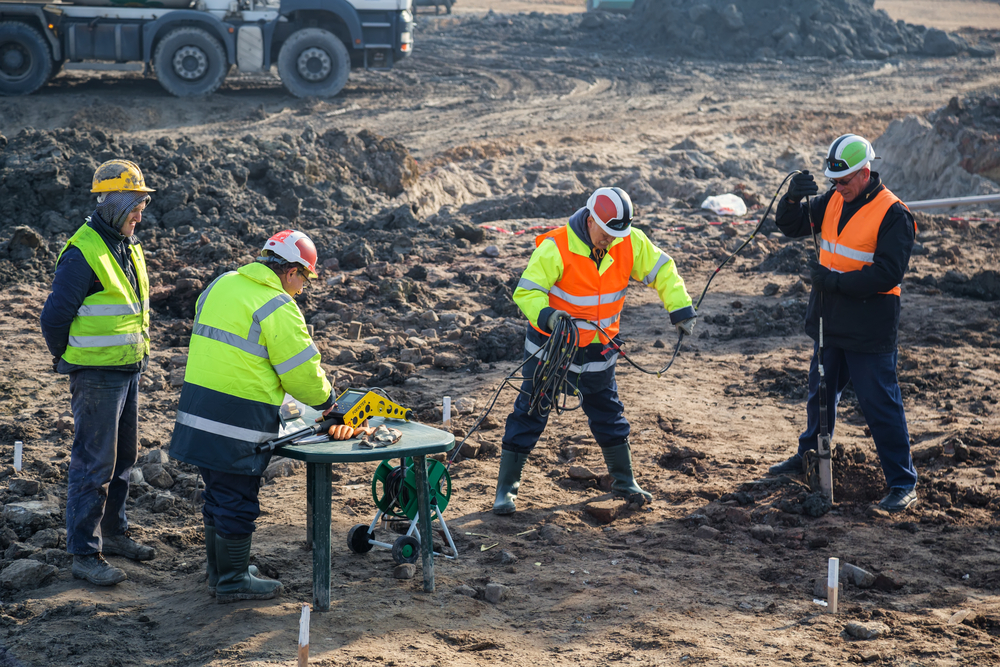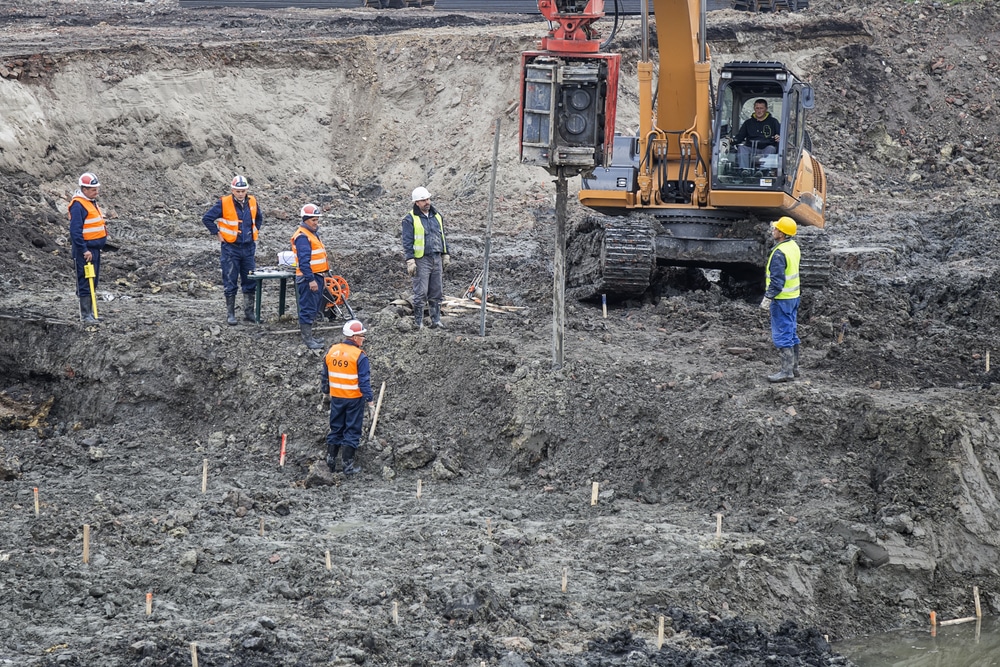Geotechnical Engineering in South Africa: Comprehensive Solutions for Building And Construction and Growth
Geotechnical Engineering in South Africa: Comprehensive Solutions for Building And Construction and Growth
Blog Article
Exactly How Consulting Civil Engineering Firms Add To Effective Task Monitoring and Style Application
Consulting civil design firms are integral to the success of construction projects, combining technological effectiveness with critical oversight. Their duty includes not just the implementation of expediency research studies yet likewise the application of innovative project management techniques that simplify processes and boost stakeholder engagement. By concentrating on layout optimization and risk mitigation, these companies make sure that projects are not just practical but cost-efficient and likewise lasting. However, the subtleties of their payments frequently remain underexplored, motivating a closer assessment of the specific methods and techniques that underpin their performance - geotechnical engineering companies in south africa.
Function of Civil Engineers
Recognizing the role of civil designers is essential for the effective monitoring of building projects. Civil designers function as the foundation of infrastructure growth, ensuring that projects are created and implemented to fulfill safety, sustainability, and functionality criteria. Their expertise encompasses different elements of design, including architectural, environmental, and geotechnical specializeds.
Civil designers are in charge of performing feasibility research studies, which examine the stability of proposed projects by assessing financial, technical, and environmental variables. They develop in-depth plans and requirements, incorporating ingenious services to optimize products and sources. Throughout the building and construction stage, civil engineers look after the project, teaming up with specialists, architects, and stakeholders to guarantee adherence to design specifications and regulative requirements.

Job Preparation Strategies
Reliable project preparation strategies are vital for ensuring that construction projects are performed efficiently and efficiently. Consulting civil design firms play an essential role in this process by using comprehensive preparation techniques that resolve numerous project stages. Originally, a complete assessment of project range and customer requirements is performed, enabling the identification of important turning points and deliverables.
In addition, these firms use tools such as Gantt charts and project management software application to develop in-depth timelines, allowing effective scheduling of jobs and resource allotment. This organized method helps to prepare for possible traffic jams and allot needed resources proactively. Danger monitoring is an additional crucial part; companies perform risk assessments to determine prospective issues that can arise throughout the project's lifecycle, carrying out mitigation techniques to reduce disruptions.
Furthermore, stakeholder engagement is highlighted throughout the planning phase. Normal communication with customers, specialists, and regional authorities ensures that all parties are straightened with project objectives and timelines. By incorporating these techniques, seeking advice from civil engineering companies improve useful source the chance of task success, making navigate here certain adherence to budget plan restrictions and regulative needs while promoting a joint atmosphere.
Layout Optimization Methods
Style optimization methods are necessary for boosting the performance and sustainability of civil engineering projects. These methods entail the organized assessment of design specifications to achieve the most effective possible end results while decreasing prices and source usage. By using innovative computational devices and algorithms, engineers can assess numerous style alternatives and choose one of the most effective options based upon specific project criteria.
One commonly used method is parametric design, which permits the manipulation of layout variables to observe their impact on total project performance. This repetitive process leads to cutting-edge solutions that not just meet functional needs but likewise follow ecological criteria. In addition, techniques such as worth design emphasis on optimizing job components to maximize worth while decreasing unneeded costs.
Furthermore, the integration of Structure Details Modeling (BIM) promotes much better collaboration among stakeholders, making it possible for real-time modifications and enhancements to designs. This alternative sight cultivates a detailed understanding of the job, resulting in notified decision-making. Inevitably, effective layout optimization strategies result in improved job timelines, lowered waste, and improved structural efficiency, adding to the total success of civil design undertakings.
Risk Administration Methods
Danger monitoring methods are critical in ensuring the effective distribution of civil design projects, as they aid determine, evaluate, and alleviate prospective risks that could influence task outcomes. Efficient threat management is a methodical process that involves the recognition of risks, evaluation of their chance and impact, and the advancement of techniques to address them.
Consulting civil design firms commonly employ a mix of qualitative and measurable threat analysis techniques (geotechnical engineering companies in south africa). Qualitative methods, such as conceptualizing sessions and expert meetings, assistance gather insights on prospective risks from different stakeholders. Alternatively, quantitative strategies entail analytical evaluation and modeling to figure out the chance and possible impact of determined dangers
When risks are assessed, companies carry out mitigation methods, which might include risk evasion, transfer, decrease, or approval. This could entail revamping task components to eliminate dangers or safeguarding insurance to offset possible economic losses. Continual monitoring and testimonial of dangers throughout the job lifecycle are additionally necessary, enabling prompt adjustments to run the risk of management methods as brand-new threats emerge.
Collaborative Communication Practices
Enhancing job outcomes through joint interaction practices is crucial for consulting civil design firms. Reliable communication promotes a culture of transparency and depend on among stakeholders, which is necessary for the effective implementation of engineering tasks. By applying organized interaction Continued networks, companies can guarantee that all parties-- customers, professionals, and employee-- are aligned on project deliverables, timelines, and goals.
Normal meetings, both informal and formal, promote the exchange of concepts and comments, permitting real-time analytical and decision-making. Utilizing joint tools such as task monitoring software program encourages paperwork and tracking of progress, while allowing immediate accessibility to crucial info.
Additionally, energetic listening and open discussion are essential elements in a joint atmosphere. By valuing varied perspectives, companies can introduce and adjust layouts that satisfy both technical demands and client expectations. Furthermore, promoting a team-oriented environment reduces misunderstandings and boosts the general top quality of work.

Conclusion
In final thought, seeking advice from civil engineering firms are integral to successful project management and layout application. By utilizing strategic planning, style optimization, and effective risk management, these firms boost task effectiveness and sustainability. Their commitment to joint communication further guarantees stakeholder alignment and promotes a participating environment. Inevitably, the proficiency and techniques utilized by seeking advice from civil designers substantially add to achieving task objectives while making the most of and decreasing expenses resource utilization.

In final thought, seeking advice from civil engineering companies are integral to successful job management and layout implementation.
Report this page